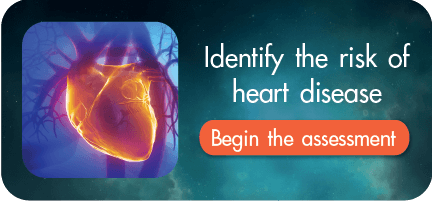An Irregular Heartbeat: Causes, Symptoms and Treatment
Arrhythmia is a condition where the heartbeat is irregular. Arrhythmia is caused by electrical impulse irregularities that lead to the heart beating too slow or too fast. The condition is more common in men than women, with around 1-2% of males encountering the condition at some point in their lives. However, the chance of developing the condition increases with age, affecting around 5% of those aged between 70-80 years.
Symptoms
The symptoms may begin with heart palpitations, both when resting and after physical activity. Patients become easily tired or feel a tightness in the chest. They may also feel faint and experience exhaustion, sometimes leading to a loss of consciousness. In some cases, other and more serious complications may arise from arrhythmia, such as a stroke or heart failure.
Initial diagnosis
Diagnosis can be carried out by measuring the heart rate. If the heart rate is inconsistent or too fast, that person should visit a doctor to undergo an electrocardiogram assessment (ECG). The ECG will provide a clearer diagnosis as to whether there is an irregular heartbeat and if there is a P-wave rating of over 350 per minute.
Physiological mechanisms behind the condition:
- Focal activation
- Multiple reentrant circuits
- A combination of 1 and 2
Causes of arrhythmia
- The condition can be caused directly by coronary artery conditions, including cardiac muscle disorders, pericardium disorders, coronary artery disease or high blood pressure, resulting in cardiovascular disease.
- Arrhythmia can result from health conditions that affect various bodily functions, most commonly in patients with hyperthyroidism, emphysema and mineral deficiencies, such as magnesium deficiency or low potassium levels. Addictive substances may also be the cause, for example some forms of stimulant medication or over-consumption of tea and/or coffee.
- Idiopathic causes are another contributing factor.
Treatment
Targeting the symptoms is the main objective of treatment, together with reducing the chance of any complications arising from arrythmnia. The following forms of treatment may be utilized:
- Medication which controls the heart rate when resting or during exercise.
- Medication that regulates the irregular heartbeat to ensure the heartbeat remains normal, preventing further irregular heartbeat.
- Anticoagulant medication, because arrhythmia patients often suffer thrombosis in the upper chamber of the heart (Left Atrium). When a clot is forced out of the heart, it has the potential to affect another vital organ, potentially leading to full or partial paralysis from embolic stroke. Hence, if any signals of this condition are displayed, doctors will utilize this form of medication.
- Installation of a pacemaker that interrupts any irregular impulses transmitted to the heart and replaces them with its own, regular signals.
- Surgery to repair the muscle tissue located in the upper chamber of the heart which is responsible for sending the irregular signals.
There is also a non-medicated form of treatment available that can prevent thrombosis. The treatment involves inserting a device into the upper chamber of the heart (Left Atrium), which is most commonly affected by thrombosis.
In cases where arrhythmia is occurring and irregular signals are being sent causing disorders – such as a drop in blood pressure or symptoms that are unresponsive to medication -, these emergency cases may have their electrical impulses reset via a process called a “cardioversion”.
The dangers of arrhythmia
In chronic cases, arrhythmia can cause the heart to work too hard or continuously beat at an increased rate. Over time, this can cause heart functions to deteriorate, which may lead to a decrease in coronary artery capabilities and cause heart failure. In severe cases, this subsequent heart failure can lead to death.
Advice on prevention and care
Quitting smoking is one form of prevention, as it has been found that during the first year after giving up smoking, the risk of coronary heart disease – a potential cause of arrhythmia – is halved when compared with those who smoke. If patients are then able to sustain their non-smoking habit for two or more years, it has been found that the risk of developing coronary heart disease drops to the same level as in those who do not smoke at all.
Exercising regularly and in moderation – such as walking or jogging for between 15-30 minutes a day, 5 days a week – also helps prevent the condition from occurring, as does reducing or avoiding tea, coffee and other stimulating beverages.
Additionally, risk groups should eat a healthy, balanced diet, exercise regularly and ensuring that they seek medical attention immediately if they do experience any heartbeat irregularities, to help prevent this dangerous condition from developing.
Complete a risk assessment for genetic conditions at:
*Required
Related
articles
